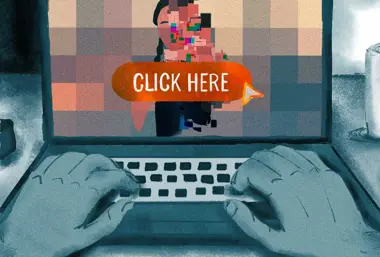
Child sexual abuse material vs ‘child porn’: why language matters
There is No Such Thing as ‘child pornography’.
Published: Wed 22 Jul 2015
Fred Langford, IWF Deputy CEO
This morning the NSPCC published a snapshot insight into the scale of the online child abuse image problem, which, they say, remains “massive”. We’re not in a place where we say “job done”.
It is important though, to recognise that here in the UK we have one of the most robust systems in the world for tackling online child sexual abuse images and videos. In fact, our analysts are identifying more of this imagery than ever before.
In the first half of 2015 they processed more than 42,000 individual reports, of which more than 23,000 were identified as child sexual abuse imagery. This means 140% more web addresses featuring child sexual abuse images and videos have been identified, and removed, in the first six months of 2015, than in the first six months of 2014.
We’re proud that just 0.3% of known child sexual abuse imagery was hosted in the UK, which is down from 18% in 1996 when the IWF was set-up. However, the internet knows no boundaries and illegal online content is hosted and accessed across the world. That is why we’re working internationally to ensure other countries can utilise our Hotline facilities and tackle online child sexual abuse overseas. If we are finding more images and videos, it’s a sign that there is more of this content out there which doesn’t paint a comfortable picture of progress. And it is clear that for every additional analyst we have, the more they will find, but finding it means we can remove it. Until such time that internet usage globally peaks (and globally less than 50% of people are online), we may keep finding more.
Stepping up
The past two years has been an incredibly busy time scaling up IWF operations and looking at how we, with the online industry and partners globally, can do more to tackle this massive and complex issue.
Following the Prime Minister’s speech in 2013, the IWF was given the ability to proactively seek out online child sexual abuse images. This is a unique ability which contributed to our Hotline finding 136% more content in 2014 compared with 2013. We still take public reports of course (and I should say, this includes reports from the online industry and police).
During summer 2013 we also received a grant of £1 million from IWF Member, Google, to recruit an additional five full-time analysts for a period of four years. By December 2013 we had also agreed a significant new membership fee structure with our industry Members to recruit another two Analysts, move to alternative premises and establish a programme of harm reduction and research activities.
All of these developments have undoubtedly enabled us to better fight online child sexual abuse imagery, but there remains children out there who are revictimised every time an image or video is uploaded, viewed or shared online. Claire Lilley, Head of Child Safety Online for the NSPCC, quite rightly said this morning: “It is a myth that there is no harm in just looking at these images.”
This is why we are working with the internet industry to develop new technology which will speed-up the identification and removal of online child sexual abuse images. IWF is working with six large US companies to develop the Hash List, a database of known child sexual abuse images that will dramatically improve efficiencies in removing online child sexual abuse images.
As ever, there is always more to be done, but the UK can be proud to have such a robust and globally successful system – which is supported globally by the online industry – for assessing and removing some of the worst images and videos on the internet.

There is No Such Thing as ‘child pornography’.